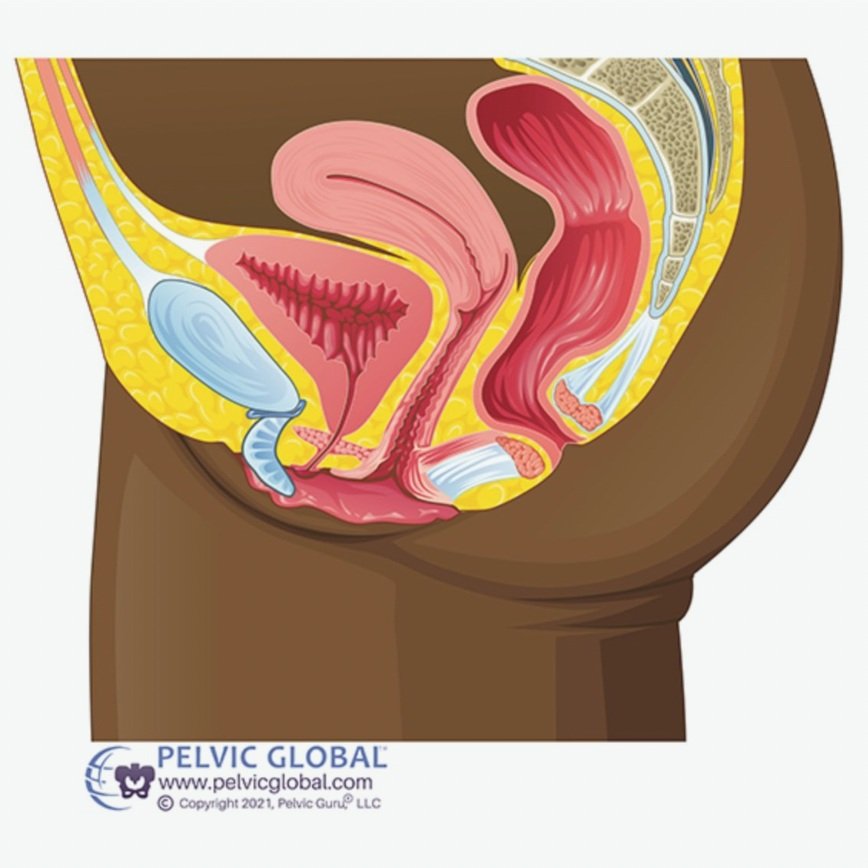Let’s talk about prolapse!
You may have heard the word ‘prolapse’ before and it can sound scary, but what is it actually? Let’s chat about it and clear some things up about it! Our pelvic floor PTs at Foundations Pelvic Health are experts in helping you manage your prolapse symptoms and getting you back to doing the activities you love!
Anatomy of a Prolapse
We have a series of organs that are neighbors to the vagina. The bladder is in the front, the rectum is in the back, and the uterus is up above.
This photo is of pelvic organs without a prolapse.
Prolapse is when one of those organs starts to push into the walls of the vagina, effectively becoming a “nosy neighbor”. You may notice a bulge or something in your vagina or something coming out towards your vaginal opening.
These photos show different types of prolapse in different stages.
With prolapse, you may experience:
Feeling of heaviness, pressure, or fullness in your vagina
A bulge vaginally
Symptoms that worsen towards the end of the day or after higher-level activity
Lower abdominal pressure
Difficulty emptying your bladder or bowels
Post-void dribbling of urine
Urinary incontinence
Low back pain
Decreased sensation during intercourse
Risk factors to prolapse include:
Childbirth: vaginal delivery, multiple deliveries, longer period of pushing, larger size of baby, forceps or vacuum assistance
Hypermobility
Chronic straining
Ehlers-Danlos
All these things may be sound scary, but our pelvic floor PTs can be so helpful with managing your symptoms and even decreasing the severity of prolapse!
Our method for helping with prolapse:
There are many approaches that our pelvic floor physical therapists utilize at Foundations Pelvic Health including:
Breath
Focusing on your breathing is a simple way to make a daily change that can affect the severity of your prolapse.
Holding your breath while exerting yourself, causes an increase in pressure down on the pelvic floor and your organs.
We focus on exhaling with exertion, including with daily tasks, strength training, core exercises, and lifting.
Lifting Mechanics
Daily life is a lot of work! Whether it’s an Amazon delivery, your toddler, or a barbell, we are lifting many times, every single day.
Hinging at your hips, bending your knees, as well as activating your core assists with reducing pressure at your pelvic floor.
We also focus on the breathing mechanics from above.
The pelvic floor muscles, glutes, and abdominals work together as a team to support us. If one of the team members isn’t working effectively, that can affect your symptoms and cause the other muscle groups to work overtime.
Pelvic Floor Strengthening
The pelvic floor muscles support us from the bottom up!
They respond to added pressure and strain with exertion and must be strong enough to withstand those forces. Think of them like a trampoline that bounces back up in response to more pressure.
Your pelvic floor therapist will determine if Kegel exercises are appropriate for you and assist with teaching you how to Kegel correctly. Some people may not benefit from Kegels, as tightening those muscles can sometimes make their symptoms worse!
Glute Strengthening
The glute muscles are powerhouse muscles that help stabilize your pelvis.
It can be harder to activate your glutes during pregnancy and postpartum, putting more strain on your pelvic floor and core muscles.
We will make exercises progressively harder in intensity and resistance while monitoring your symptoms, so that you don’t have to worry about lifting or chasing after your toddler day-to-day.
Core Strengthening
Our core system is always working to stabilize us and keep us upright
In the clinic, we will focus on activating the deep core muscles to further support your trunk and core muscles with activity. We will also assess for diastasis recti, or abdominal separation.
With deep core activation, pressure down on your pelvic floor is managed effectively so that you don’t experience worsening symptoms.
Pelvic floor physical therapy is a great first line treatment to address potential prolapse and get you back to your normal activities and exercise. At Foundations Pelvic Health, we help our patients resolve their prolapse symptoms and get back to doing all the things they love!


